Demystifying the complex world of wine tasting
“Its texture envelops the palate, and its sophisticated nose delivers vibrant notes of strawberry and raspberry, sweet spices like cinnamon, and notes of coffee that contribute to its decisive personality.”
Is this a description of a Bordeaux first growth, or just a fruit cake?
It’s happened to most of us: that overbearing “wino” waxing lyrical about what they can smell in a glass of wine, while onlookers stare blankly, wondering why they can’t detect the same things. As a wine lover, it’s easy to get carried away with aroma romance (we’ll admit we’re susceptible to it ourselves), but this week’s bulletin aims to deconstruct the art of tasting, and help you sort through the nonsense.
Trust your tastebuds
Our palates start to develop from birth. As babies we discover different tastes and textures, as children we affirm our likes and dislikes, and as adults our palates continue to evolve with every new dining experience.
Tasting wine (just like tasting food) is a subjective and individual experience. Olfactory functions in the brain are linked to memories and emotions. Smells therefore trigger memories of past experiences, and evoke strong emotions: the smell of freshly baked cookies might remind you of your childhood home, and the taste of a specific spirit might trigger flashbacks to a night from teenage years you’d rather forget.
When we taste wine, the aromas and flavours we detect come from our existing olfactory libraries – if a fellow taster smells “Japanese cherry-blossom” in the glass, you won’t be able to relate fully unless you’ve experienced Kyoto in springtime.
Wine tasting 101
Since we all have basic smelling and tasting skills, you can apply a simple three-step structure to evaluate a wine. Practicing this whenever you taste will increase your ability to identify specific flavours.
1. Appearance – setting the stage
Look at the wine in the glass. Its colour can offer clues about age, origin, and even grape variety. A young red wine will typically be deep ruby red, and sometimes slightly purple, while an older red may be less dense in colour, and shown brick-red or even brown tones.

2. Nose – first impressions
Swirl the glass (allowing aromas to release from the liquid), and take in a first nose. Our sense of smell accounts for about 80% of what we perceive as taste. The smell will first allow you to detect any faults – a corked wine will have a wet cardboard smell, while a wine that’s past its prime may be muted.

As you smell the wine, you may detect:
• Primary aromas deriving from the grape variety and terroir: fruits, herbs or spices, and flowers.
• Secondary aromas, such as vanilla, butter, or toast, coming from how the wine was made (e.g. the use of oak, or maturation of a wine on its lees).
• Tertiary aromas may show in a wine with some age. Complex aromas such as earth, mushrooms, and leather come with a wine’s maturation in bottle.
3. Palate – the final verdict
Sip the wine and allow it to move around your mouth. This will give you information about its alcohol content, sweetness, acidity, and tannins, while allowing you to identify the above-mentioned flavour groups. High quality wines will be concentrated, and their taste will linger for a long time in the mouth – something that is measured in Caudalies (equivalent to seconds).

Beware the brain
Evaluating wine may seem a daunting task. Remember that practice will never make perfect, as there’s no such thing in how we understand and appreciate what’s in the glass. As you advance in your wine tasting, beware the battle with your own brain. The influence of our other senses – sight and hearing – can interfere with the nose and mouth.
If we listen to fellow tasters reeling off aromas, we’ll try to find them in the wine ourselves. If we recognise the label of a bottle, we’ll search for the expected aromas from its given region or grape variety.
We counter this by tasting blind at 1275, and are often humbled by how hard identifying a wine correctly really is. Be kind to yourself and others while tasting wine: we are all human, and with a glass in hand, should have faith in our own intuition. After all, tasting wine is only a performance in personal perception.

